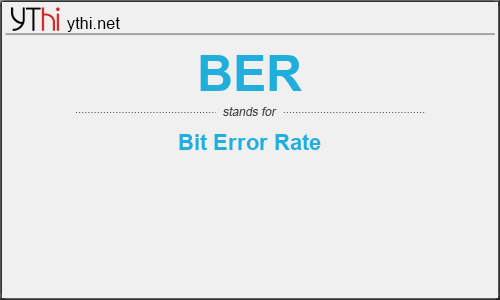What does BER mean? What is the full form of BER?
The full form of BER is Bit Error Rate
Bit Error Rate, BER is used as an important parameter in characterising the performance of data channels.
When transmitting data from one point to another, either over a radio/ wireless link or a wired telecommunications link, the key parameter is how many errors will appear in the data that appears at the remote end.
As such Bit Error Rate, BER is applicable to everything from fibre optic links, to ADSL, Wi-Fi, cellular communications, IoT links and many more.
Even thought he data links may utilise very different types of technology, the basics of the assessment of the bit error rate are exactly the same.
When data is transmitted over a data link, there is a possibility of errors being introduced into the system. If errors are introduced into the data, then the integrity of the system may be compromised. As a result, it is necessary to assess the performance of the system, and bit error rate, BER, provides an ideal way in which this can be achieved.
Unlike many other forms of assessment, bit error rate, BER assesses the full end to end performance of a system including the transmitter, receiver and the medium between the two. In this way, bit error rate, BER enables the actual performance of a system in operation to be tested, rather than testing the component parts and hoping that they will operate satisfactorily when in place.


Leave a Reply
You must be logged in to post a comment.